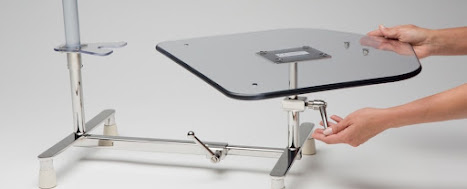Safety Tips for Using a Pediatric Orthopedic Table in Hospitals
In pediatric healthcare, the proper tools and equipment are crucial for delivering effective treatment while ensuring the safety and comfort of young patients. One such vital piece of equipment is the pediatric orthopedic table, commonly used in hospitals for orthopedic procedures, casting, and fracture management. When used correctly, these tables can greatly improve patient outcomes, but improper handling or lack of awareness can lead to accidents or complications. To help ensure a safe and effective treatment experience, here are some essential safety tips for using a pediatric orthopedic table in a hospital setting.
1. Ensure Proper Table Adjustment
The height and positioning of the pediatric orthopedic table must be carefully adjusted according to the patient's age, size, and the procedure being performed. Most pediatric orthopedic tables are designed with adjustable features to accommodate different needs. Nurses and medical staff should always ensure that the table is positioned correctly before placing the child on it. Improper height or angles can lead to discomfort, muscle strain, or even injury. Additionally, make sure that the child is securely positioned on the table to prevent unnecessary movement during the procedure.
2. Use of Appropriate Restraints
A pediatric orthopedic table often comes equipped with safety restraints to help keep young patients in place during orthopedic procedures. These restraints are essential to avoid sudden movements that could affect the alignment of bones or cause injury. Always ensure the restraints are applied snugly but not too tight. Over-tightening can cause discomfort or even circulatory issues, while too loose a fit can compromise the stability of the child. Pediatric nurses and medical staff should be well-trained in using these restraints effectively and safely.
3. Monitor for Comfort and Safety
It's important to monitor the comfort of the child throughout the procedure continually. Pediatric patients may not always communicate discomfort or distress, especially under sedation or anesthesia. Medical staff should frequently check for signs of discomfort, such as restlessness, changes in skin color, or breathing irregularities. Padding or cushioning should be used to prevent pressure sores or injury from extended periods of immobility on the orthopedic spica table.
4. Secure and Check Equipment Regularly
Before starting any procedure, it is vital to inspect the orthopedic spica table for any loose components or signs of wear. A malfunctioning table could lead to complications or an unsafe environment for both the patient and the healthcare providers. Regular maintenance checks are crucial in keeping the table in optimal working condition. If any part of the table seems damaged or malfunctioning, it should be repaired or replaced before use.
5. Staff Training and Communication
Using a pediatric orthopedic table requires a high level of coordination between the medical team. Ensure all healthcare professionals involved in the procedure are well-trained in how to handle the table, including setting it up, adjusting it, and using any special features. Proper communication between the surgical team, nurses, and anesthesiologists is vital to ensure a smooth and safe procedure.
Conclusion
The pediatric orthopedic table plays a critical role in the successful treatment of young patients in orthopedic care. By following these safety tips, medical staff can help minimize the risks associated with its use while ensuring that the child is as comfortable and safe as possible. Always prioritize ongoing training, equipment maintenance, and careful attention to the child's needs for a smooth and safe healthcare experience.



Comments
Post a Comment